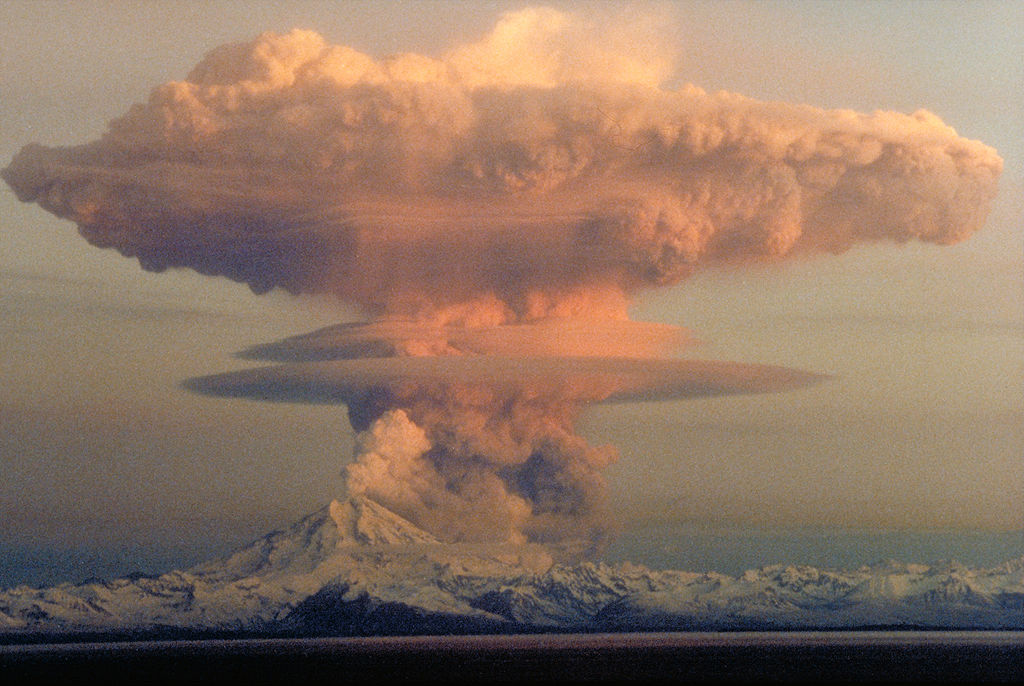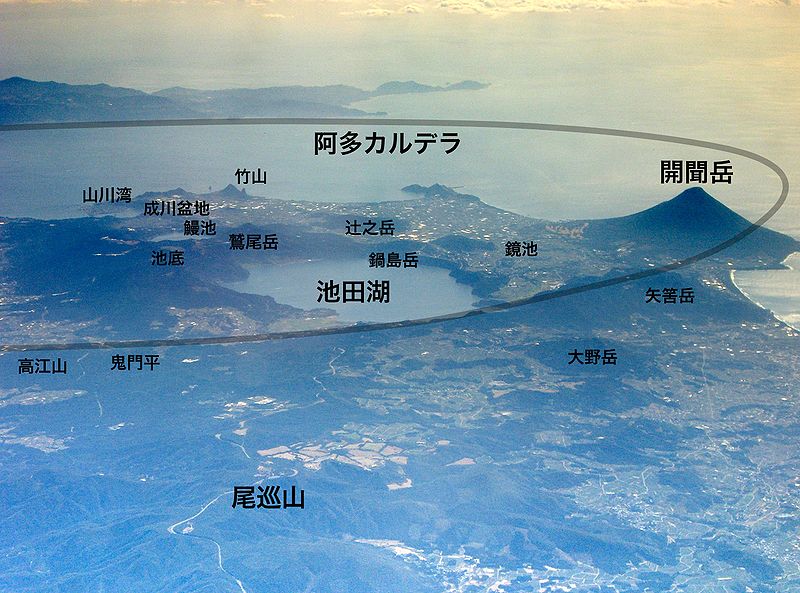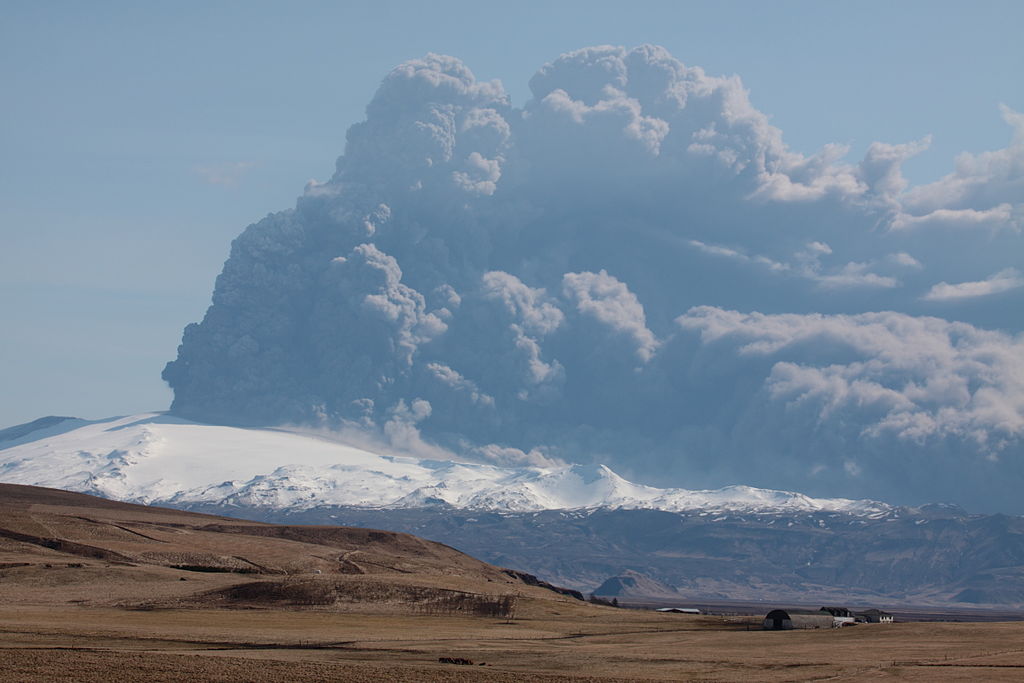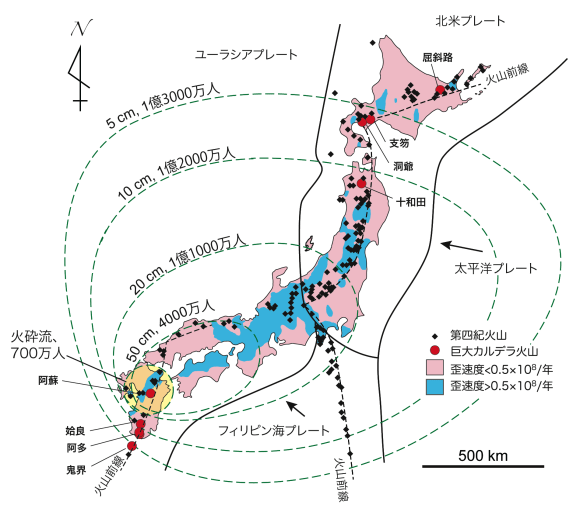
Feeling a little too chipper today? Here’s something to bring you back to down to earth: According to Kobe University professor Yoshiyuki Tatsumi and his research staff, there is a one-percent chance that a huge, Japanese-civilization-obliterating volcanic eruption will occur sometime within the next 100 years.
One percent may not sound like very much, but when you hear the kind of eruption the professor’s research refers to, you’ll understand why even that tiny number is much bigger than we’d like.
Professor Tatsumi’s study warns of the small but distinct possibility of what is known as a Plinian eruption occurring within the next 100 years in Japan. What that basically means is that a volcano will erupt, shooting ash and smoke as high as 18km (11 miles) into the air and spew out a pyroclastic flow (a super hot and very fast-moving mixture of gas and rock) that will engulf vast areas. The eruption would leave behind a huge crater, such as those visible in places such as the Ata crater in Kagoshima (below) and Crater Lake in Oregon, USA.
▼The circle shows part of the circumference of the Ata crater in Kagoshima. What an explosion that must have been!

These kinds of eruptions can last from one day to entire months. Though it was of a slightly different nature, you may remember how back in 2010 the Icelandic Plinian eruption of Eyjafjallajokull – which technically lasted for six months – stopped air travel in 20 countries. In Japan however, it would cause a lot more problems than a few hundred deaths (which itself is not to be looked upon lightly), and suspended air travel — we’re talking massive destruction.
▼ A view of the ash cloud from Eyjafjallajokull.

The experts predict that the Kikai volcano, located just south of mainland Kagoshima Prefecture in southern Kyushu, will be the culprit for the massive eruption. Why Kikai? First off, southern Kyushu is home to three other huge calderas – remnants of past eruptions. Further, not only is Kikai huge and long overdue a rumble, but the last time it erupted 7,300 years ago, it wiped out the culture and completely changed the ecology of the area, which actually didn’t recover for nearly a thousand years. I’ll say that again: it took one thousand years for plant and animal natural life in the area to fully recover!
▼ The red dots show the locations of large craters. The green dashed circles show the expected range of the ash cloud and death count (in ten thousands) from the Kyushu caldera sights.
Image: Kobe University
If Kikai were to erupt at the same 8.1-Magnitude it did all those years ago, the pyroclastic flow would kill approximately seven million people within just two hours. Due to the westerly winds, all of the main Japanese island of Honshu would be engulfed in so much ash that Kobe’s study expects life there to be virtually impossible. All communications and lifelines will probably be cut off, leaving most of the population of Japan, about 120 million people, pretty much left for dead.
Thankfully, in reality the chances of complete annihilation coming tomorrow are even slimmer than the one percent the study mentions, and there are scientists tirelessly monitoring volcanic activity in efforts to keep the people of Japan safe, so it’s highly unlikely that, if such an eruption were to happen, we’d have zero warning. But hey, it might not be a bad idea to get that disaster kit ready- or maybe move to Hokkaido where you’d be just outside of the danger zone.
Now, quickly, before you spend the rest of your day staring gloomily out of the window or thinking how futile life is, go and look at something cute.
Source: niconico news, Kobe University
Top image: Wikipedia


 Sakurajima’s 500th eruption this year goes off with a bang and a huge cloud of ash
Sakurajima’s 500th eruption this year goes off with a bang and a huge cloud of ash 7-Eleven Japan’s ramen-cooking robot whipped us up a bowl of noodles【Taste test】
7-Eleven Japan’s ramen-cooking robot whipped us up a bowl of noodles【Taste test】 Japan’s otoshidama tradition of giving kids money at New Year’s gets a social welfare upgrade
Japan’s otoshidama tradition of giving kids money at New Year’s gets a social welfare upgrade Hello Kitty Choco Egg figures are an adorable trip through three periods of Japanese pop culture【Pics】
Hello Kitty Choco Egg figures are an adorable trip through three periods of Japanese pop culture【Pics】 Mr. Sato accosts award-winning actor Hideaki Ito【Interview】
Mr. Sato accosts award-winning actor Hideaki Ito【Interview】 Japanese convenience store Family Mart adding crane games to thousands of branches
Japanese convenience store Family Mart adding crane games to thousands of branches Yoshinoya adds first-ever chain-wide ramen with new beef and pork-broth noodle hot pot meals
Yoshinoya adds first-ever chain-wide ramen with new beef and pork-broth noodle hot pot meals Evangelion original anime studio Gainax is now completely dissolved, Eva’s creator mourns ruined friendships
Evangelion original anime studio Gainax is now completely dissolved, Eva’s creator mourns ruined friendships We take a ride on Seibu Railway’s futuristic luxury liner: the Limited Express Laview
We take a ride on Seibu Railway’s futuristic luxury liner: the Limited Express Laview 7-Eleven Japan has a hack for creating insanely delicious potato chip rice meals
7-Eleven Japan has a hack for creating insanely delicious potato chip rice meals Is it rude to sing along at concerts in Japan? We ask a pro musician for his take
Is it rude to sing along at concerts in Japan? We ask a pro musician for his take 7-Eleven Japan starts new temporary luggage storage service in over 300 branches
7-Eleven Japan starts new temporary luggage storage service in over 300 branches Disillusionment at Tsukiji’s tourist-target prices led us to a great ramen restaurant in Tokyo
Disillusionment at Tsukiji’s tourist-target prices led us to a great ramen restaurant in Tokyo Starbucks teams up with 166-year-old Kyoto doll maker for Year of the Horse decorations【Photos】
Starbucks teams up with 166-year-old Kyoto doll maker for Year of the Horse decorations【Photos】 Japan may add Japanese language proficiency, lifestyle classes to permanent foreign resident requirements
Japan may add Japanese language proficiency, lifestyle classes to permanent foreign resident requirements Starbucks Japan releases new zodiac chilled cup drink for 2026
Starbucks Japan releases new zodiac chilled cup drink for 2026 Lacquerware supplier to emperor of Japan and Pokémon team up for new tableware
Lacquerware supplier to emperor of Japan and Pokémon team up for new tableware Tokyo’s Tsukiji sushi neighborhood asks tour groups to stay away for the rest of the month
Tokyo’s Tsukiji sushi neighborhood asks tour groups to stay away for the rest of the month Is this the most relaxing Starbucks in Japan?
Is this the most relaxing Starbucks in Japan? Starbucks on a Shinkansen bullet train platform: 6 tips for using the automated store in Japan
Starbucks on a Shinkansen bullet train platform: 6 tips for using the automated store in Japan Street Fighter Hadouken Churros to be launched and eaten in Tokyo, Okami pudding on offer too
Street Fighter Hadouken Churros to be launched and eaten in Tokyo, Okami pudding on offer too Japan’s human washing machines will go on sale to general public, demos to be held in Tokyo
Japan’s human washing machines will go on sale to general public, demos to be held in Tokyo Japanese train company is letting fans buy its actual ticket gates for their homes
Japanese train company is letting fans buy its actual ticket gates for their homes Tokyo considering law requiring more trash cans following litter increase in heavily touristed area
Tokyo considering law requiring more trash cans following litter increase in heavily touristed area Nintendo’s Kirby now delivering orders at Kura Sushi restaurants, but not in Japan
Nintendo’s Kirby now delivering orders at Kura Sushi restaurants, but not in Japan Tokyo event lets you travel back in time, for free, to celebrate 100 years since Showa era start
Tokyo event lets you travel back in time, for free, to celebrate 100 years since Showa era start Sanrio theme park in Japan announces plans to expand into a Sanrio resort
Sanrio theme park in Japan announces plans to expand into a Sanrio resort Survey asks foreign tourists what bothered them in Japan, more than half gave same answer
Survey asks foreign tourists what bothered them in Japan, more than half gave same answer Japan’s deadliest food claims more victims, but why do people keep eating it for New Year’s?
Japan’s deadliest food claims more victims, but why do people keep eating it for New Year’s? We deeply regret going into this tunnel on our walk in the mountains of Japan
We deeply regret going into this tunnel on our walk in the mountains of Japan Studio Ghibli releases Kodama forest spirits from Princess Mononoke to light up your home
Studio Ghibli releases Kodama forest spirits from Princess Mononoke to light up your home Major Japanese hotel chain says reservations via overseas booking sites may not be valid
Major Japanese hotel chain says reservations via overseas booking sites may not be valid Put sesame oil in your coffee? Japanese maker says it’s the best way to start your day【Taste test】
Put sesame oil in your coffee? Japanese maker says it’s the best way to start your day【Taste test】 The top 10 annoying foreign tourist behaviors on trains, as chosen by Japanese people【Survey】
The top 10 annoying foreign tourist behaviors on trains, as chosen by Japanese people【Survey】 No more using real katana for tourism activities, Japan’s National Police Agency says
No more using real katana for tourism activities, Japan’s National Police Agency says Starbucks Japan reveals new sakura drinkware collection, inspired by evening cherry blossoms
Starbucks Japan reveals new sakura drinkware collection, inspired by evening cherry blossoms
Leave a Reply